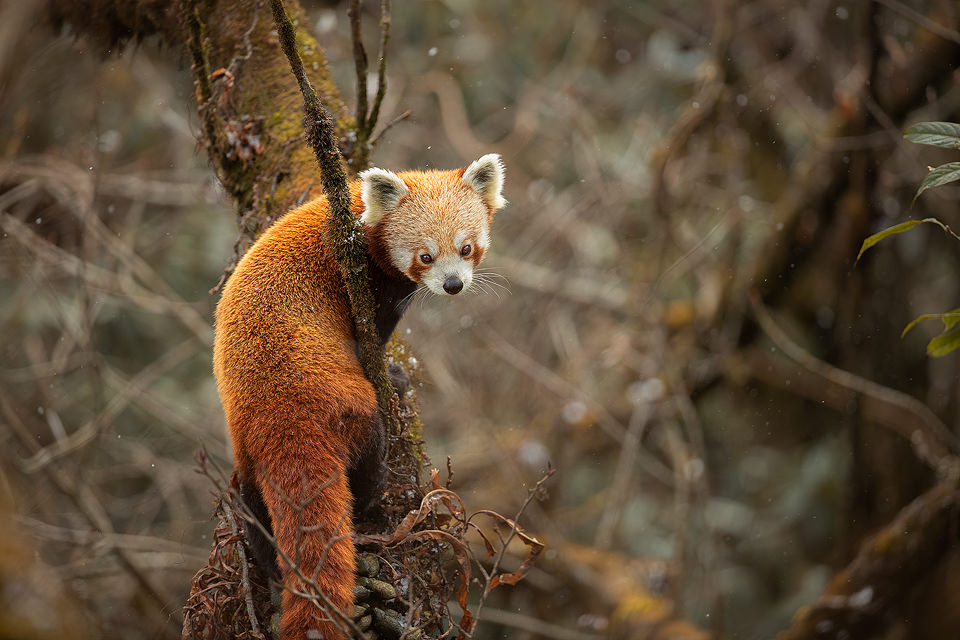Red Panda in falling snow. Wild Red Panda looking back towards the camera with flakes of falling snow. Himalayan cloud forest habitat. Singalila National Park, West Bengal, India.
Red Panda in falling snow – About Singalila National Park:
Singalila National Park is located in the Eastern Himalayan Region of India, in the state of West Bengal. It was declared a National Park in 1992 and is one of the best places to observe wild red pandas in India. This temperate cloud forest of fir, deciduous hardwoods, Rhododendron and dense bamboo is located on the Singalila Ridge at an altitude of 7000 ft to 12000 ft above sea level.
The area gets considerable seasonal monsoon rains, meaning it is perfect for a variety of weird and wonderful plants. Over 600 varieties of orchids bloom in Singalia, the largest concentration of any geographical area in the world. It is one of the most remote national parks in India, only access by foot or by the the trusty old Land Rovers left over from the British era.
About the Red Panda:
The red panda (Ailurus fulgens) is an arboreal mammal native to the eastern Himalayas and southwestern China. It is the only living member of the genus Ailurus. Red pandas have reddish-brown fur, a long striped tail, and distinctive facial markings which can be used to identify individual pandas. Their thick fur is double layered and highly water resistant, perfect for dealing with the harsh Himalayan climate.
Red pandas prefer to spend their entire time in the tree canopy and look uncomfortable when on the ground thanks to their a waddling gait due to their short front legs. They sleep in trees and even get their water by licking water from the moss. They do not even descend to defecate, instead using latrines high up in the tree canopy. This specialisation helps them to avoid large predators such as the clouded leopard.
Despite their name, red pandas are not closely related to the giant panda and are in fact the only ‘true’ panda. Giant pandas are actually part of the bear family, Ursidae. One similarity they do share with giant pandas is their “false thumb”, which is actually an extension of the wrist bone. When descending a tree head-first, they are able to rotate their joints to control their descent.
Conservation:
These charismatic Himalayan specialists have survived for millions of years thanks to their extraordinary survival strategies, however they are now on the brink of extinction. It is estimated that less than 3000 red pandas exist in the wild. This figure continues to decline due to habitat loss and fragmentation, poaching, and lack of genetic diversity due to inbreeding. The small fragmented populations and continued decline mean that they are listed as endangered on the IUCN Red List.
You can read more about Red Pandas on my blog here.
